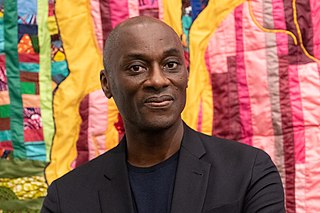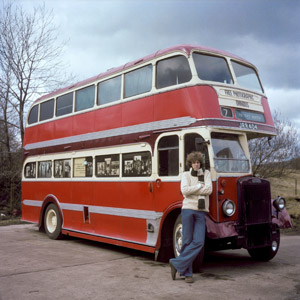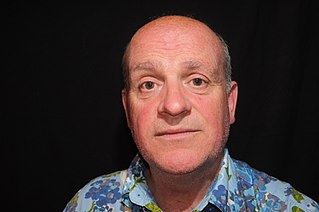
Martin Parr is a British documentary photographer, photojournalist and photobook collector. He is known for his photographic projects that take an intimate, satirical and anthropological look at aspects of modern life, in particular documenting the social classes of England, and more broadly the wealth of the Western world.
Bill Brandt was a British photographer and photojournalist. Born in Germany, Brandt moved to England, where he became known for his images of British society for such magazines as Lilliput and Picture Post; later he made distorted nudes, portraits of famous artists and landscapes. He is widely considered to be one of the most important British photographers of the 20th century.

Ekow Eshun is a British writer, journalist, broadcaster, and curator.

Victor Sloan MBE is a Northern Irish photographer and artist.

Paul Graham is a British fine-art and documentary photographer. He has published three survey monographs, along with 17 other publications.
Christopher David Killip was a Manx photographer who worked at Harvard University from 1991 to 2017, as a Professor of Visual and Environmental Studies. Killip is known for his black and white images of people and places especially of Tyneside during the 1980s.
Christopher Horace Steele-Perkins is a British photographer and member of Magnum Photos, best known for his depictions of Africa, Afghanistan, England, Northern Ireland, and Japan.
Ian Jeffrey is an English art historian, writer and curator.
Jason Evans is a Welsh photographer and lecturer on photography. His best known work is Strictly, a series of portraits of young black men dressed as "country gents" made in collaboration with stylist Simon Foxton, and which were acquired for the permanent collection of the Tate Gallery, in 2004.
Mark Haworth-Booth is a British academic and historian of photography. He was a curator at the Victoria & Albert Museum in London from 1970 to 2004.

Daniel Meadows is an English photographer turned maker of digital stories, and a teacher of photography turned teacher of participatory media.
Susan Bright is a British writer and curator of photography, specializing in how photography is made, disseminated and interpreted. She has curated exhibitions internationally at institutions including: Tate Britain, National Portrait Gallery in London and the Museum of Contemporary Photography in Chicago amongst others.
Graham Scott Finlayson (1932–1999) was an English photojournalist who first worked for the Daily Mail and the Guardian, and later freelanced.

Paul Reas is a British social documentary photographer and university lecturer. He is best known for photographing consumerism in Britain in the 1980s and 1990s.
Val Williams is a British curator and author who has become an authority on British photography. She is the Professor of the History and Culture of Photography at the London College of Communication, part of the University of the Arts London, and was formerly the Curator of Exhibitions and Collections at the Hasselblad Center.
Photography and the Archive Research Centre (PARC) is a defunct organisation in London that commissions new research into photography and culture, curates and produces exhibitions and publications, organises seminars, study days, symposia and conferences, and supervises PhD students. It is a part of University of the Arts London (UAL), is based at UAL's London College of Communication at Elephant & Castle and was designated by UAL in 2003. PARC was shut down after twenty years of operating in 2023.
Photoworks is a UK development agency dedicated to photography, based in Brighton, England and founded in 1995. It commissions and publishes new photography and writing on photography; publishes the Photoworks Annual, a journal on photography and visual culture, tours Photoworks Presents, a live talks and events programme, and produces the Brighton Photo Biennial, the UK's largest international photography festival Brighton Photo Biennial,. It fosters new talent through the organisation of the Jerwood/Photoworks Awards in collaboration with the Jerwood Charitable Foundation.
Clare Strand is a British conceptual photographer based in Brighton and Hove in the UK. She makes, as David Campany puts it, "black-and-white photographs that would be equally at home in an art gallery, the offices of a scientific institute, or the archive of a dark cult. ... They look like evidence, but of what we cannot know."
Sarah Pickering is a British visual artist working with photography and related media including 3D scanning and digital rendering, performance, appropriated objects and print. Her artist statement says she is interested in "fakes, tests, hierarchy, sci-fi, explosions, photography and gunfire." She is based in London.

Stuart Griffiths is a British photographer and writer living in Hastings, East Sussex. He published photographs from his time in the Parachute Regiment in The Myth of the Airborne Warrior (2011) and wrote about that period and later in Pigs' Disco (2013). Griffiths has had a solo exhibition, Closer, at MAC, Birmingham and his work is held in the collection of the Imperial War Museums.







